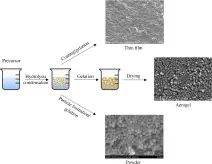
Abstract
Sol–gel coatings, thanks to the structural control at a molecular level, have a wide range of applications. These materials are environmentally friendly and can be an effective alternative to harmful methods of obtaining protection materials. In comparison to organic polymer coatings, inorganic sol–gel coatings have some advantages such as high mechanical, chemical, and thermal stability, biological inertness, high transparency and photostability, controllable porosity, and release of embedded agents. Sol–gel coatings provide a simple and cost-efficient approach to functionalize different surfaces to improve their bioactivity, corrosion and wear resistance, mechanical properties, reliability, and performance. An overview of these modifications is presented in this chapter.